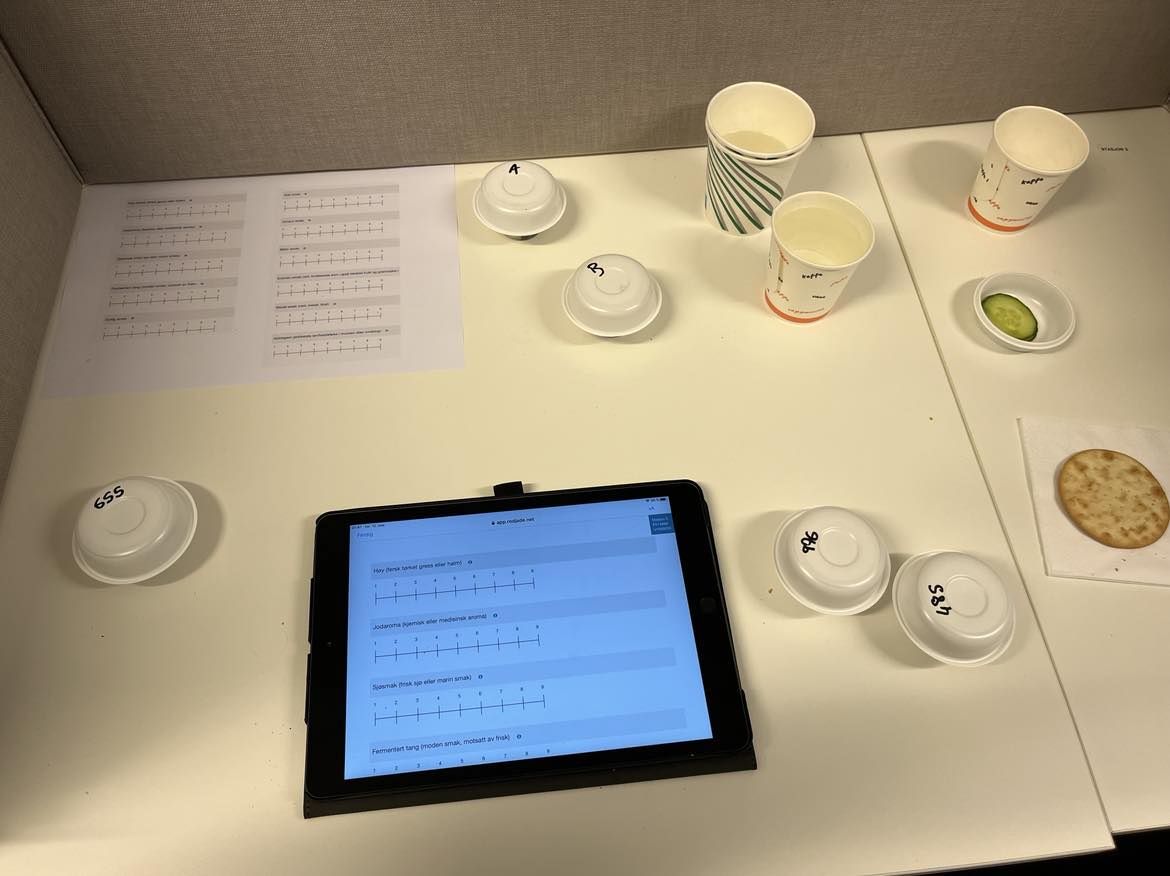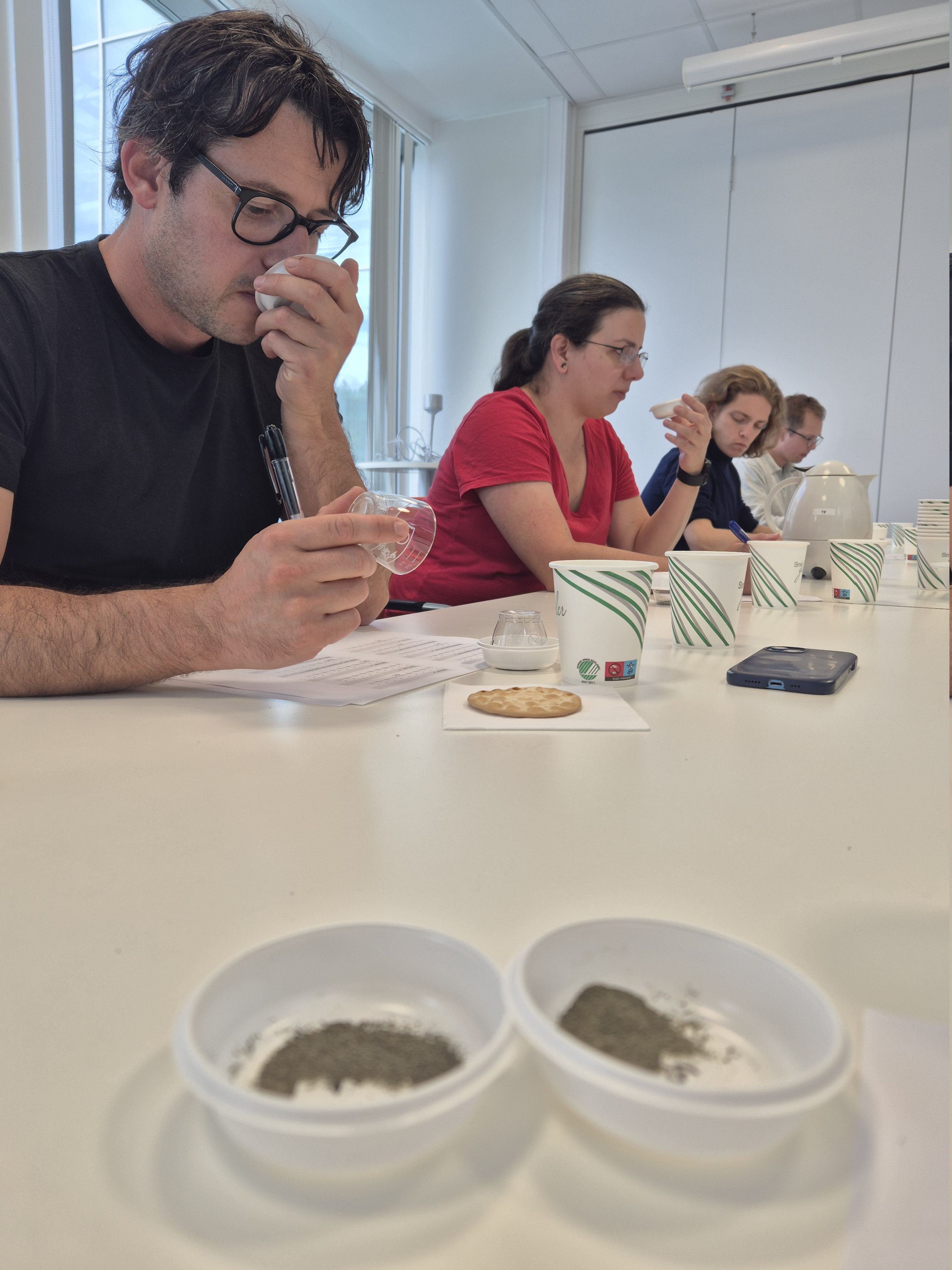
Sensory evaluation of winged kelp (Alaria esculenta) stored up to two years. The samples are served in dried form to 8 trained sensory panelists in a sensory test facility with individual booth. The samples are coded with 3-digits number and assessed following 11 sensory attributes describing flavour and odour. For each attribute, panelists give samples a score from 1 to 9 (low to high intensity). Cucumber slices and dry crackers help panelists to neutralise their palate during the evaluation of different samples and sensory attributes.
Earlier this September, the research team at Møreforsking conducted a sensory evaluation of fermented and dried winged kelp (Alaria esculenta) from various producers, all partners of the SusKelpFood project. The kelp samples, which had been stored for up to two years, were assessed at Møreforsking’s sensory laboratory by trained panel members drawn from the staff. Using 11 sensory attributes—including key descriptors like salty, umami, and fresh sea—the team evaluated the flavour and odour profiles of the kelp.
Preliminary results are promising, indicating that the sensory profile of the winged kelp remains stable over time, with only minor changes observed during the storage period. This suggests that the kelp’s flavour maintains its integrity, even after extended storage.
As part of the next step, we will be pairing these sensory findings with an analysis of flavour-active compounds. This combined data will help us better understand the biochemical processes influencing the kelp's flavour, with the goal of optimizing processing and storage conditions for future production.
Good storage can maintain the flavour properties of food but in some cases it may improve it. Do you know that dry Japanese kombu (Saccharina japonica) may be stored and aged for several years in cellars to give the kelp a more intense umami flavour and complex aroma!
The full results of this study are currently being analysed and will be published in a scientific journal soon.
Stay tuned for more updates on this exciting research!
